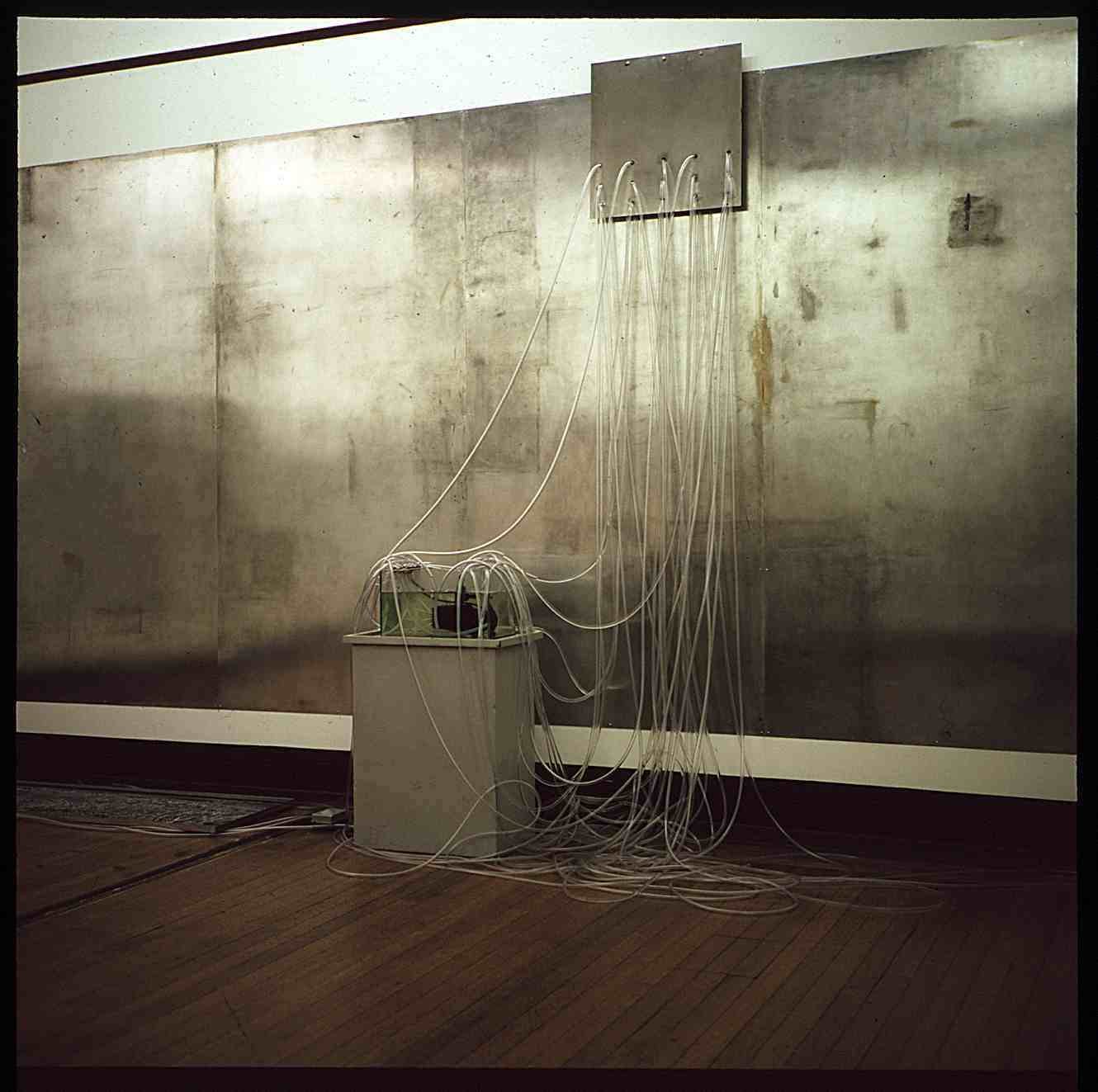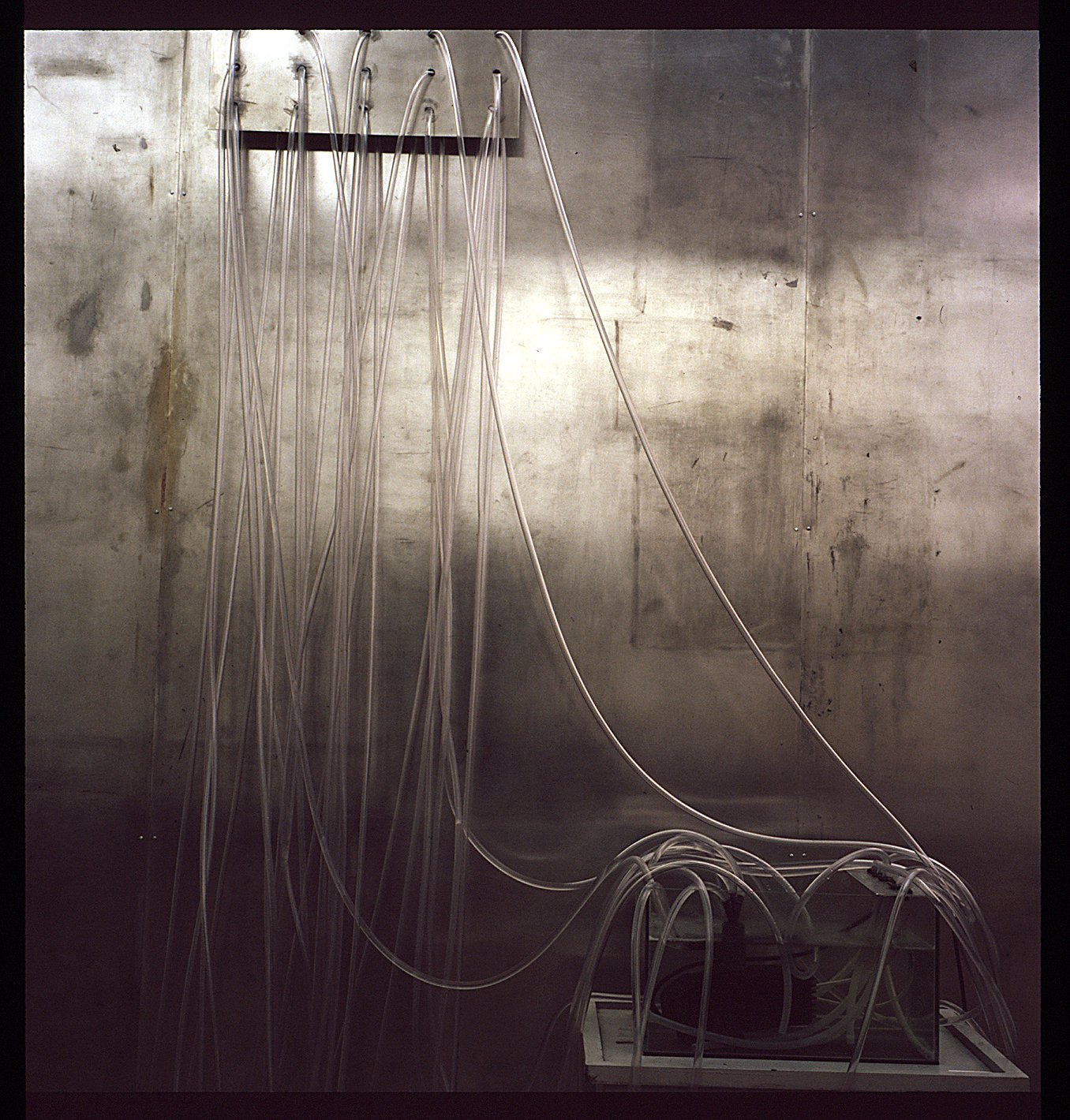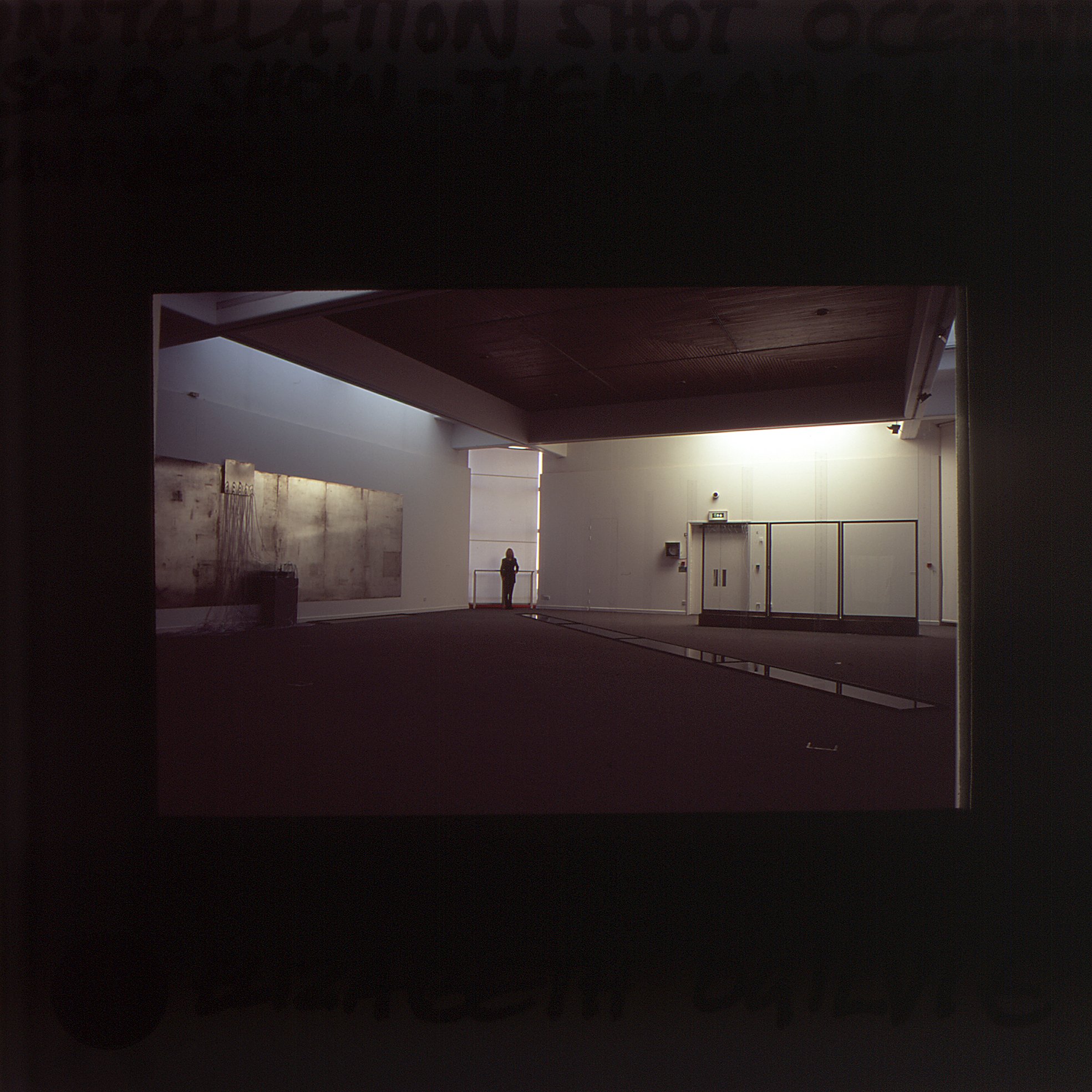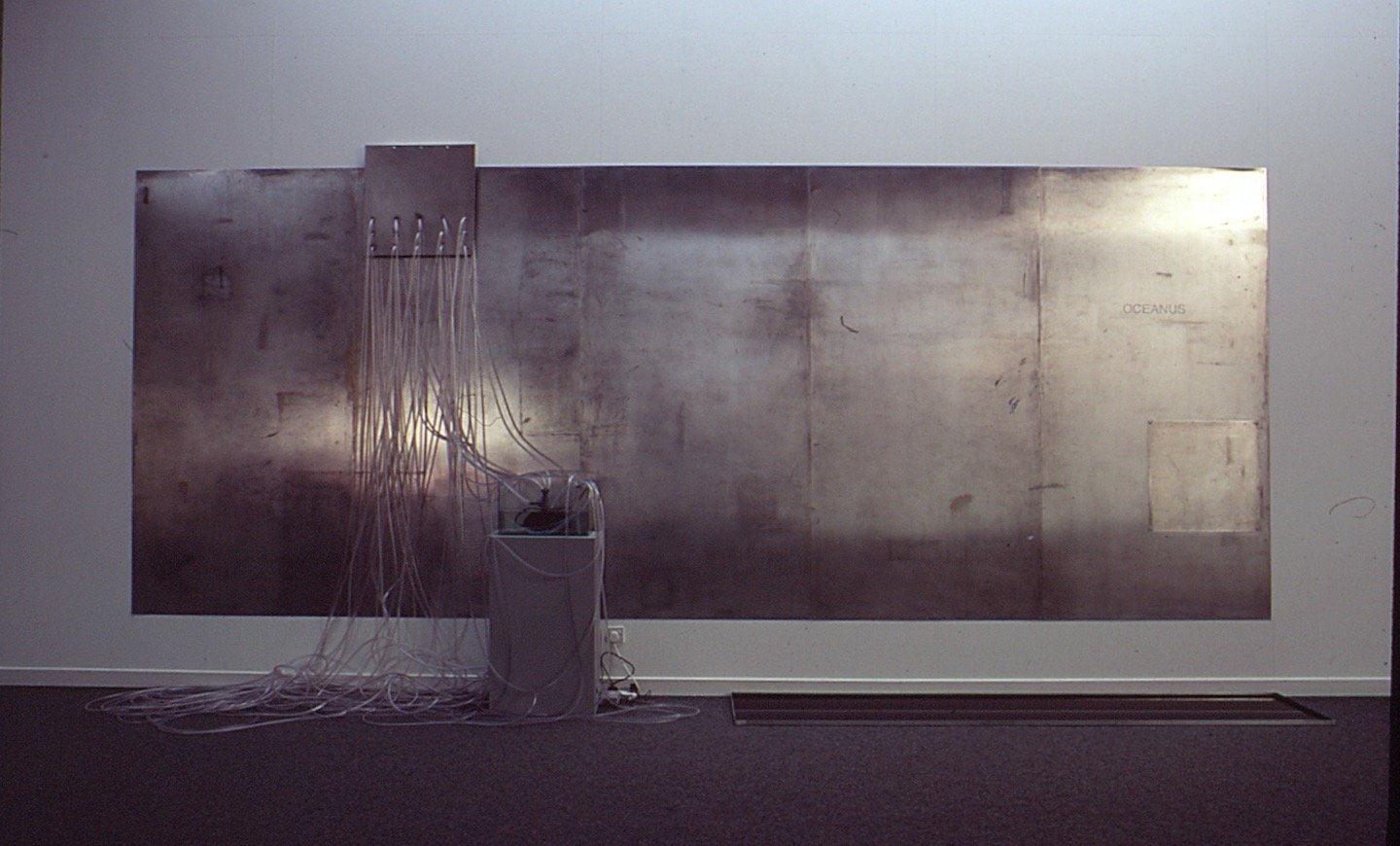Lessons in Transience | Amanda Daly
“Elizabeth Ogilvie makes work about the sea. It surrounds her. From the windows of her home and the studio on the Firth of Forth, Scotland, the view of the sea is encompassing, its presence consuming. Aspects of her relationship to it have long informed her work.”
Ogilvie's [recent] works mark a move from earlier pieces which recorded personal responses to the ocean - its expanses, its fall upon the coast, its endless approach, our place at its edge and our journeys across it. In these works, the artist captured minute sea fronds, the sky and changing patterns of light reflection, charting the sea's moods and effects. This ongoing relationship was initially formed by Ogilvies's memories of her maternal home on the remote Island of St Kilda, 110 miles off the Scottish Coast, an indistinct yet constant source for her art. She remembers the boat trip to St Kilda and a sense of anticipation, a catch in the throat , as the island appeared on the horizon.
Ogilvie's view to the horizon remains, though Oceanus Project 1 signals a new line of inquiry from the ocean's edge. Her sculpture refers now to the global bodies and cyclical nature of all the water on the earth's surface - a celebration of the release, distribution, collection and evaporation of oceans, their currents, tides, mists and rain. Water is a morphological agent that carves our terrain and defines our environments. In constant transition, it flows around the boundaries and horizons of our understanding and carries with it the passing of time.
The large scale sculptures of Oceanus Project 1 combine the strength and magnitude of strong, cold constructions of steel, with the intimacy and poetry of text. Water is a central component of many of the works. It remains a tactile presence in the Gallery; running down a face of glass veiling the words etched upon it; bubbling through pipes and pumps, or lying in a long pool across the gallery floor holding words above it in stillness. These works do not simply evoke the influence and movement of water, they demonstrate the way it reflects, flows and falls. Words and water pour together, imaging one another across the gallery wall, Perspex etched panels hang and sway, mirrored in the water beneath them.
There is a wait and stability to this new work, a presence which belies the fluidity of Ogilvie's subject and the more ethereal evocations of her words. The monumentality of steel, the constant motion of the water and the repetitive rhythm of the texts imbue the pieces with a meditative quality. This is a response to the artist's interest in Zen philosophy which has led to an increasing simplicity of form. The scale and clarity of her sculpture has also evolved from her interest in contemporary architecture and the use of water in architecture. This begins with her own home, Sea Loft, and the constant sight, smell and sound of the sea there, and extends to an interest in the incorporation of water in the buildings of architects such as Tadeo Ando in Japan.
Oceanus Projecct 1 assumes an architectural presence within the Mead Gallery. The works stand before and above the viewer and must be walked around or along before they can be fully seen. The relationship between the works and the architectural space they occupy is a central concern of the exhibition. The artist's intention was not to bring individual sculptures together in a manner of a survey but to develop a project, an ongoing field of investigation. For the Mead Gallery the exhibition offers the opportunity not only to show a body of Ogilvie's recent work but to support an exploration of how meaning is constructed by the combination of the works and our space.
The desire to develop such relationships leads us to commission Thomas Clark [to write for this book]. In doing so we wished to create an opportunity to extend an understanding of both Ogilvie's sculpture and Clark's poetry. Neither artist's work describes the other's, but both are capable of evoking the very nature of the elements with brevity and clarity.
Oceanus Project 1 emerges from Elizabeth Ogilvie's commitment to an investigation of the oceans' waters and the Mead Gallery's commitment to extending our audiences experience of the forms and possibilities of contemporary visual arts. The exhibition marks the culmination of a long period of collaboration between us, another layer of the process that constitutes the project and shaped the exhibition.





